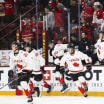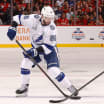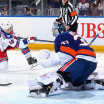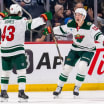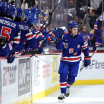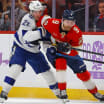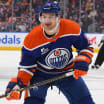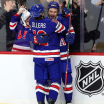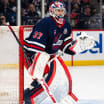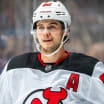Legendary hockey reporter and analyst Stan Fischler writes a weekly scrapbook for NHL.com. Fischler, known as "The Hockey Maven," will share his knowledge, humor and insight with readers each Wednesday.
This week's edition features a 1968 interview with Hockey Hall of Famer Cyclone Taylor, one of the game's greatest stars from the pre-NHL era. Taylor, then in his mid-80s and living in Vancouver, was the oldest living member of the Hall when he sat down with Stan to share stories from his hockey life.
Here are some highlights of that conversation from more than a half-century ago.
Voices from the past: Cyclone Taylor
Pre-NHL Hall of Famer talks about nickname, career, favorite players in 1968 interview
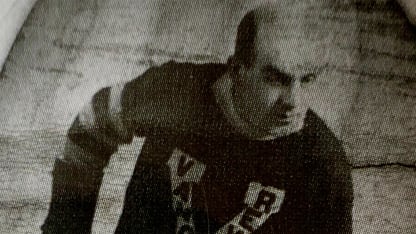
By
Stan Fischler
Special to NHL.com
What were your earliest hockey memories?
We played on outdoor rinks all over Listowel, Ontario, and I came into my own in 1902 when I was 19. We played against teams from nearby towns -- Palmerston, Harrison, Mount Forest and Mitchell. People started to notice my style and my speed. In 1904 I was invited to Portage La Prairie to play in the Manitoba Senior Amateur League. That was a big thing for me at the time.
What were your biggest challenges at first?
The Manitoba league was one of the strongest on the continent. We played against the famous Rat Portage club and some tough teams from Winnipeg. At first, I played left wing, but I switched to a position they don't have anymore called a "rover." In those days, hockey was a seven-man game -- a goalie, two defensemen, three forwards and the rover. You don't hear about the seventh man anymore.
What was the role of the "rover"?
As the extra man, I was out there to either help the defense or move up and work with the forwards. I roved around the ice, going wherever I was needed most. For that reason alone, I had to be one of the best men on the ice. And I was so fast that after one game in Manitoba, a writer nicknamed me "Whirlwind." It turned out to be the first of several nicknames I'd get because of my speed, but that one wasn't the best nickname.
How did you get the nickname "Cyclone"?
When I turned pro in the International League (in 1905-06), a reporter decided to give me another nickname. This time it was "Whirlwind" and it stayed that way until I signed with Ottawa (in 1907), and in one particular game against the Montreal Wanderers my coach put me on defense; I never was sure why. Anyhow, we beat Montreal, 8-5, and I scored five goals on individual rushes. Malcolm Bryce, the sports editor of the Ottawa Free Press, was very impressed by my game. He wrote that, "Starting today, based on his performance last night, I'm rechristening him 'Cyclone' Taylor."
What was it like being a hockey star in those days?
By 1910 I was receiving $5,260, the most ever paid to a hockey player up to that time. And if I'd been smart, I could just as easily have gotten $10,000 because I was in demand. I had built a reputation for myself and had the catchy nickname, "Cyclone," which I liked best of all the nicknames. Funny thing; when we played an exhibition game in Manhattan at St. Nicholas Arena, somebody in the New York press called me "The Jim Jeffries of the Ice" after the famous boxer of that era. That made me feel great since I was young and very impressionable, but "Cyclone" sounded better than "Jim Jeffries of the Ice."
What are some of the differences between hockey then and now (in 1968)?
A skater like me would play an entire 60 minutes without a substitute, and it didn't seem a bit tiring. One reason was our motivation. We were terrifically dedicated and there was a tendency to magnify the importance of every game. Another difference was the way we shot the puck, as we didn't have anything like today's slap shot. Ours was a wrist shot, which could be pretty damaging and 10 times more accurate than the slap shot. Also, we'd hold onto the puck until we could give it to a teammate or until the puck was taken away from us.
Why were you so famous for your skating?
A lot was written about my speed and how I once even scored a goal skating backwards -- but that never happened. My speed gave me an advantage since 90 percent of the game then was skating and two percent stickhandling. The rest was courage and condition. It was a rough game and I played 18 years of it -- 60 minutes a game -- with the pros and I never lost a tooth or got a scar. It was all because of my skating. Once I passed an opponent, I didn't have to worry about him anymore.
Did you get any endorsements?
Most players supplemented their hockey income with side jobs or endorsements. The first offer I ever had to endorse anything was from an underwear company. Unfortunately, my wife -- she was a hockey fan -- didn't want me parading around half-naked so I dropped the idea. That was the only offer I ever got.
What were some of the secrets to your hockey longevity?
I played for Vancouver from the opening season in 1911 until 1922. Our arena held about 10,500 fans, and we'd draw the biggest crowds in Canada. But as I reached my thirties, I became conscious of the time when I'd have to quit. I played until I was 36; that was pretty old for those days since we were still playing 60 minutes a game. The trick was taking care of the body and remembering that diet was most important. I figured that proper dieting was half of training.
Who are some of your favorite players today (in 1968)?
The most appealing NHL player for me is
Bobby Hull
, who could have played 60 minutes a game if they let him. I also like
Gordie Howe
, who's a great player, and
"Rocket" Richard
, who had a style all his own. In my day, the favorites were Ernie Johnson,
Frank Nighbor
and
Hughie Lehman
. They'd have been stars in the NHL. But, by the same token, today's greats would have been stars when I was out there!
